Abstract
The turbulent flow properties of dilute (0.06% by volume) suspensions of human red blood cells in 4-mm-bore glass tubing were estimated by laser anemometry. The flow properties of the dilute red cell suspension were similar to those of a dilute suspension of polystyrene spheres (0.5 micron diameter) in isotonic NaCl solution. Flow was found to be laminar when the Reynolds number was below 2,000, transitional in the range of Reynolds numbers from 2,000 to 3,000, and fully turbulent above Reynolds number 3,000. These results differ from previous studies of more concentrated red cell suspensions. The length scales of the turbulence were also estimated: at a Reynolds number near 4,000 the macroscale is about 1.25 mm, the Taylor microscale is about 0.85 mm, and the Kolmogoroff scale is near 0.075 mm. The results are discussed in relation to previous measurements of the rate of oxygen uptake by dilute red cell suspensions in the flow-type rapid reaction apparatus. Our results suggest that under the conditions of most of these oxygen uptake measurements, the turbulent flow is characterized by eddies about 1 mm across, mixing with each other on a time scale of about 45 ms. Since most of the reported oxygen uptake measurements involve a similar time scale, it is possible that an effective "unstirred layer" influenced the reported rate of oxygen uptake.
Full text
PDF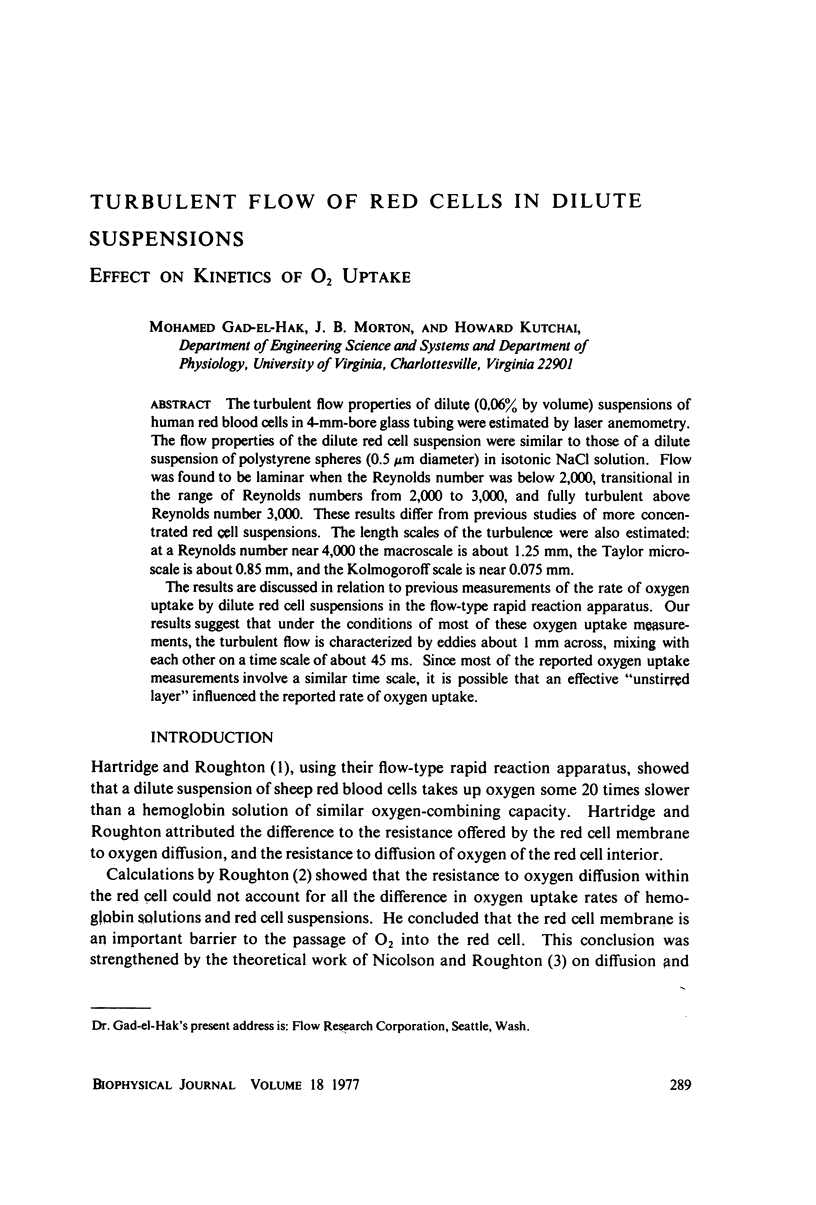
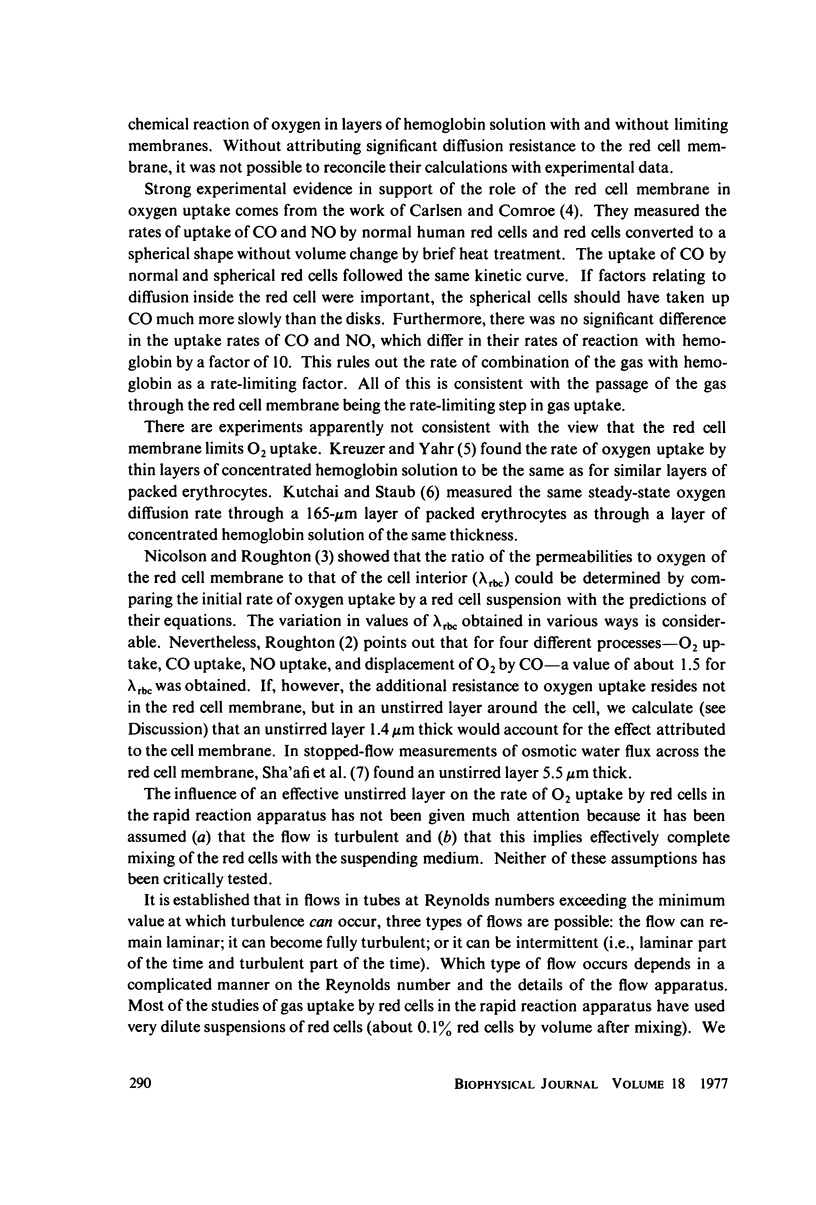
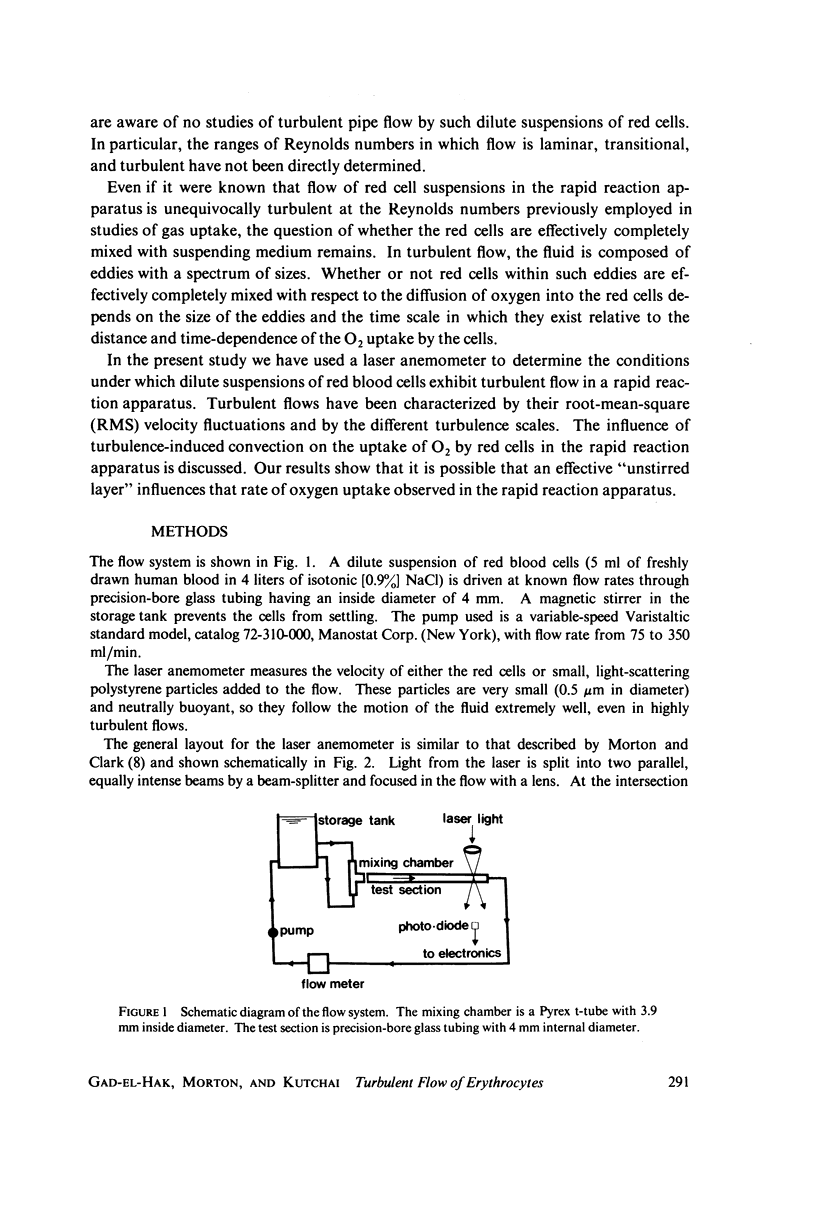
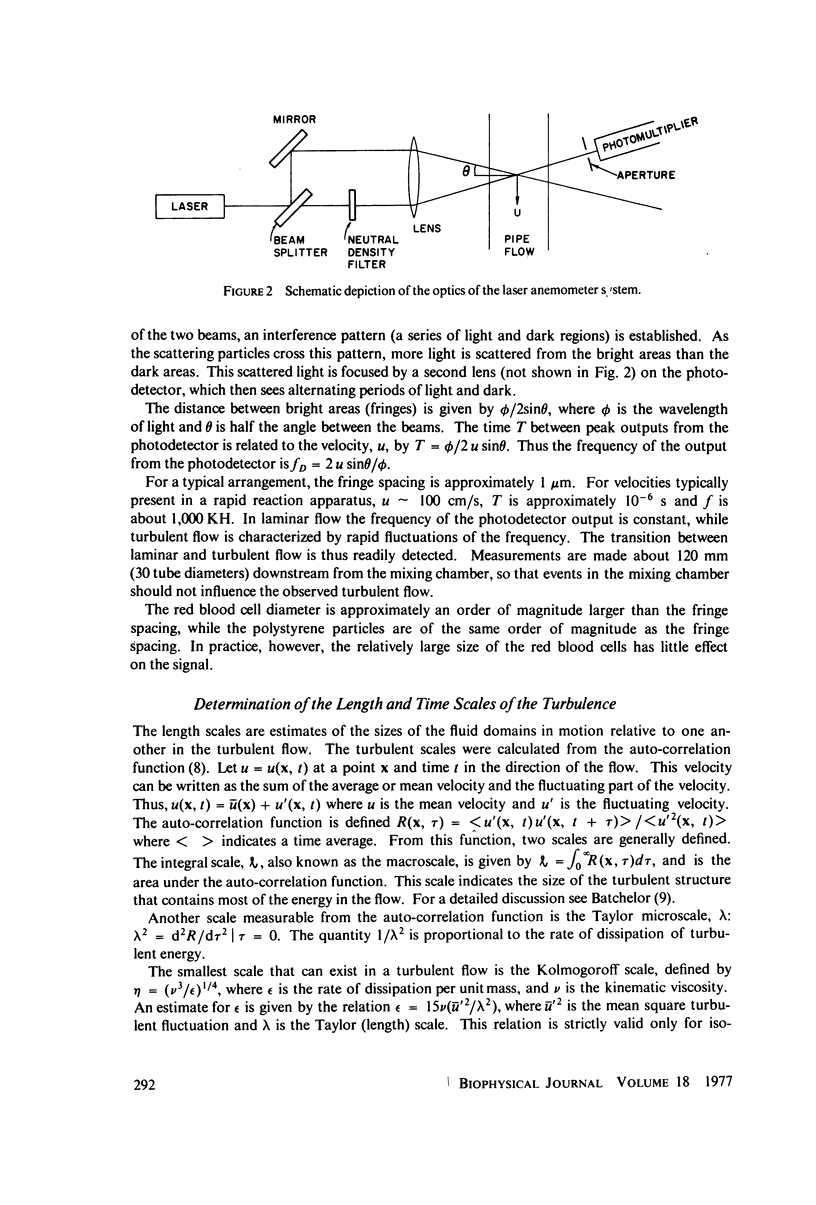
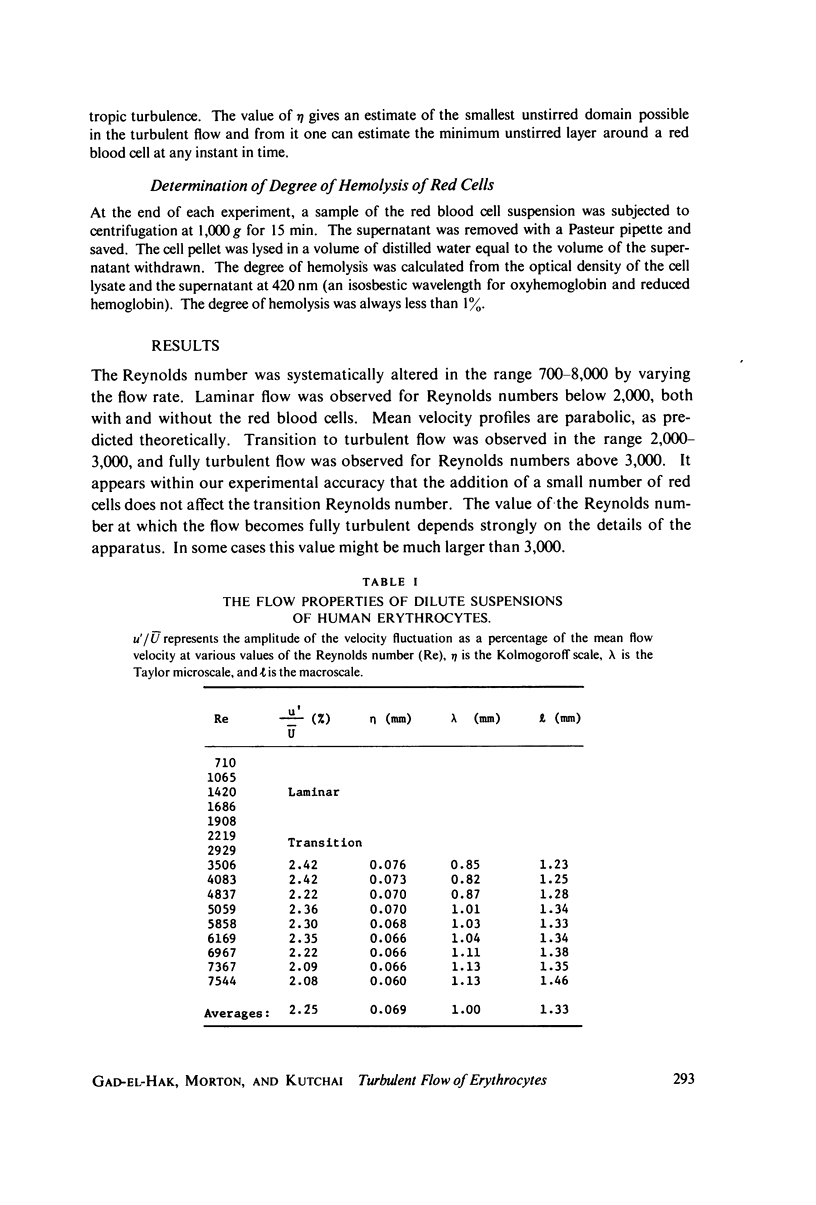
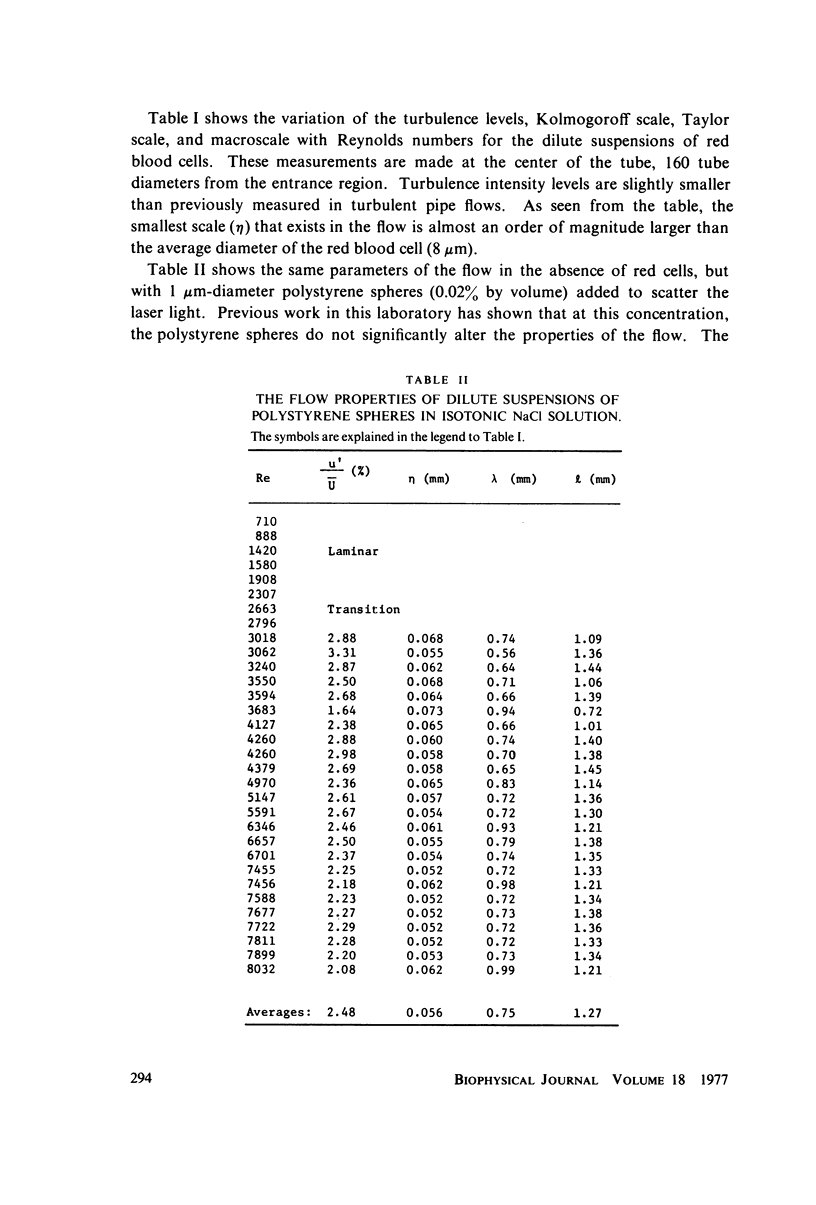
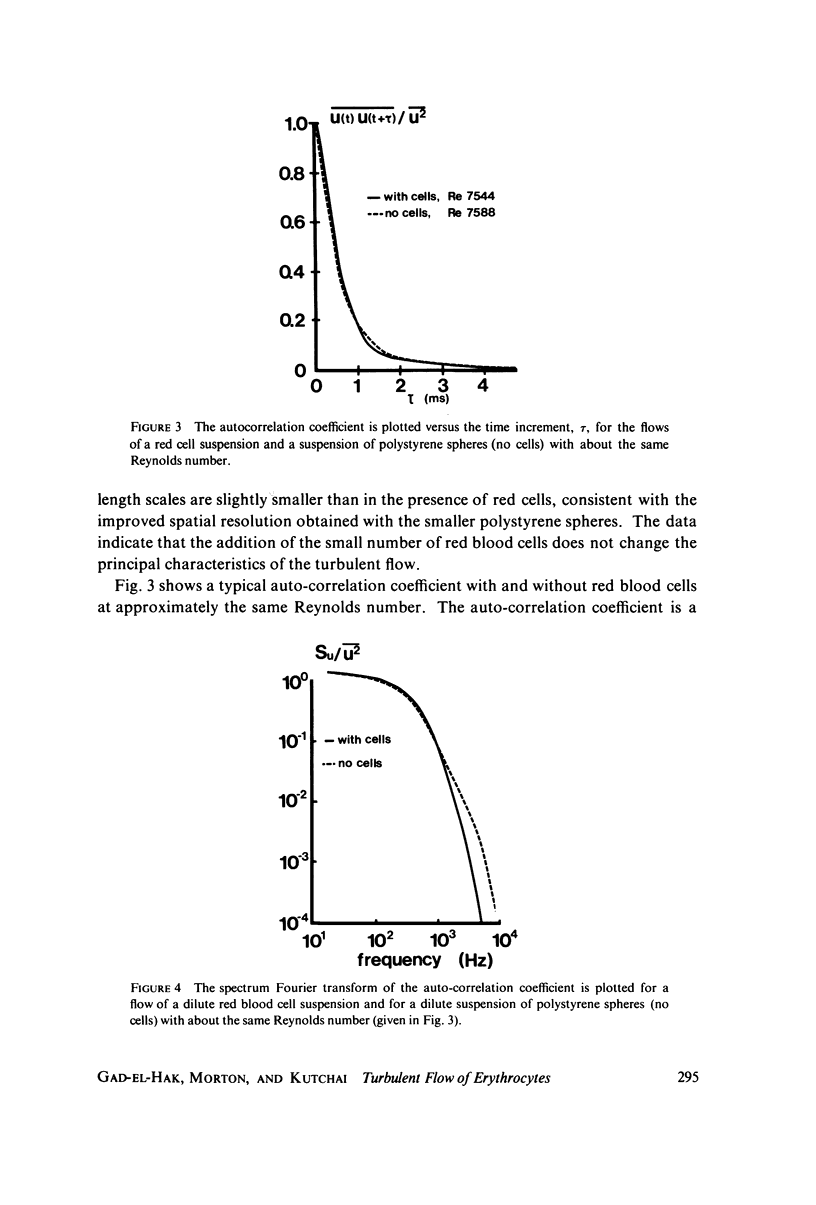
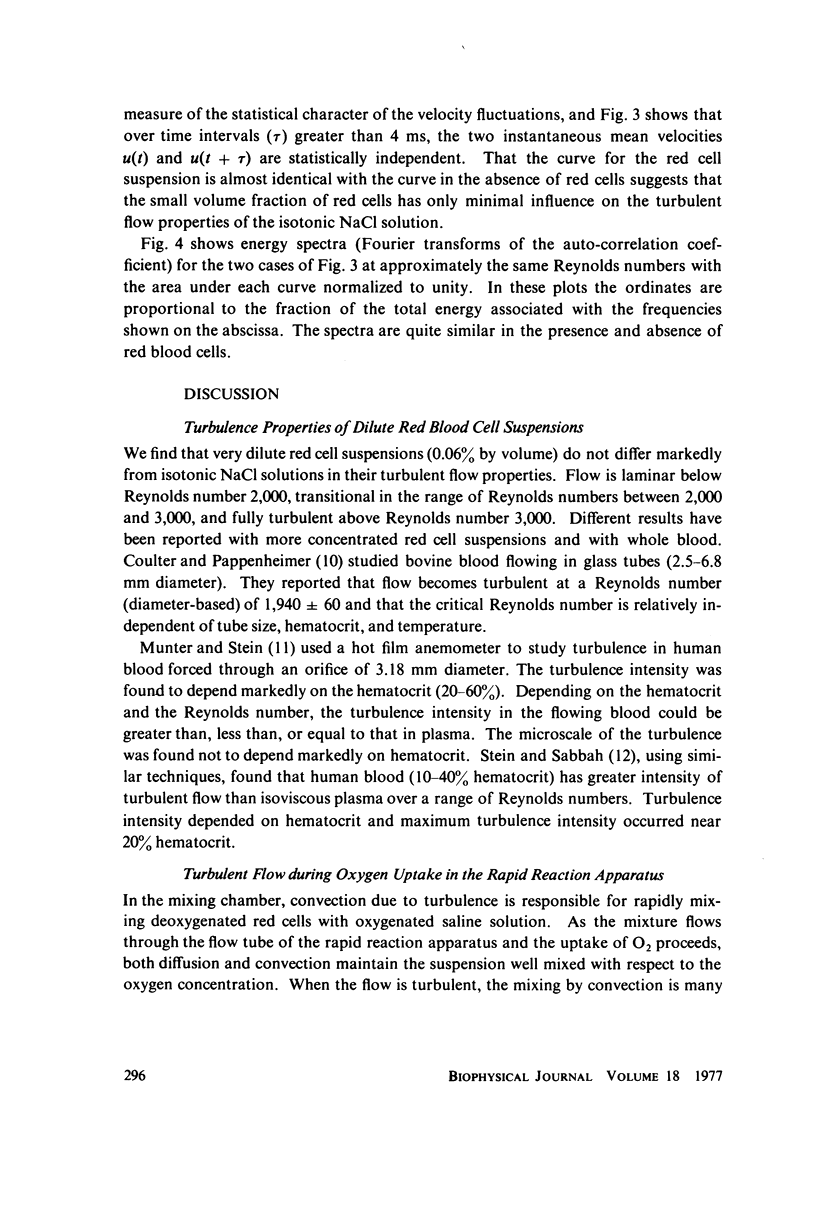
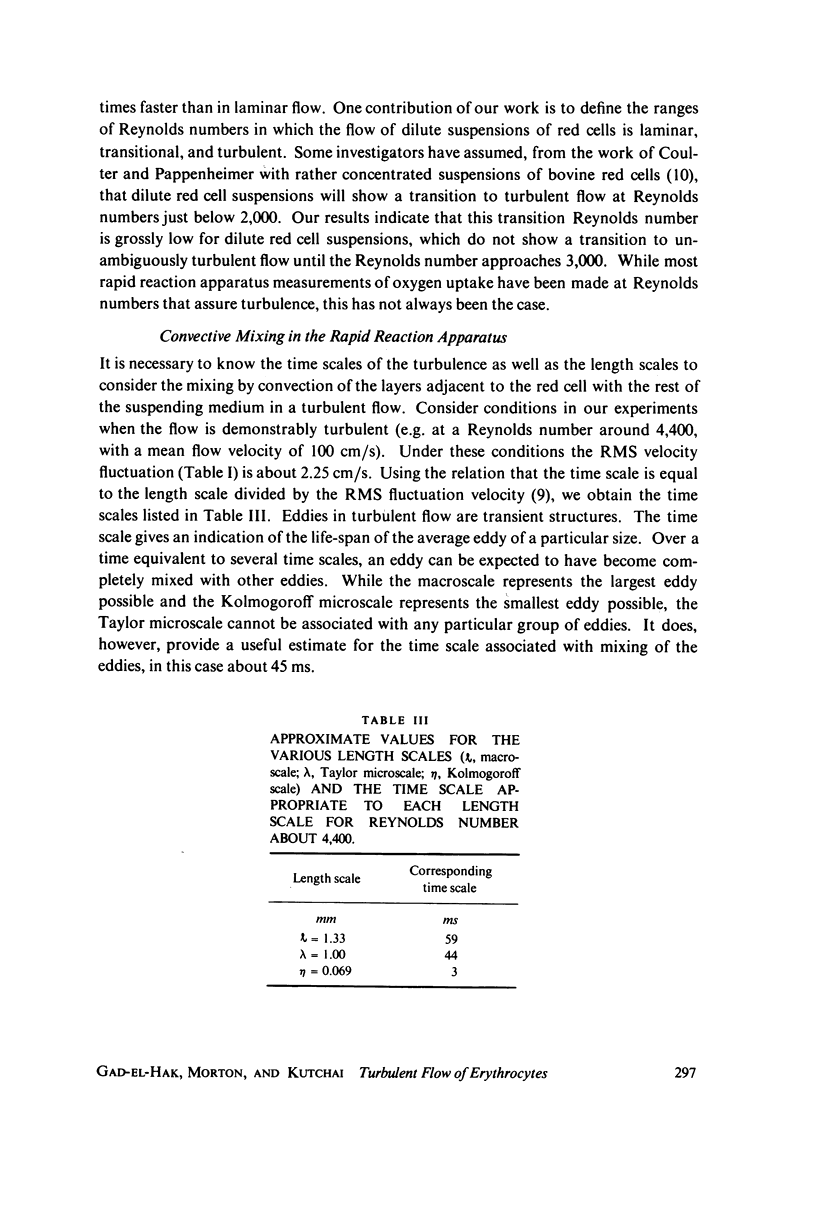
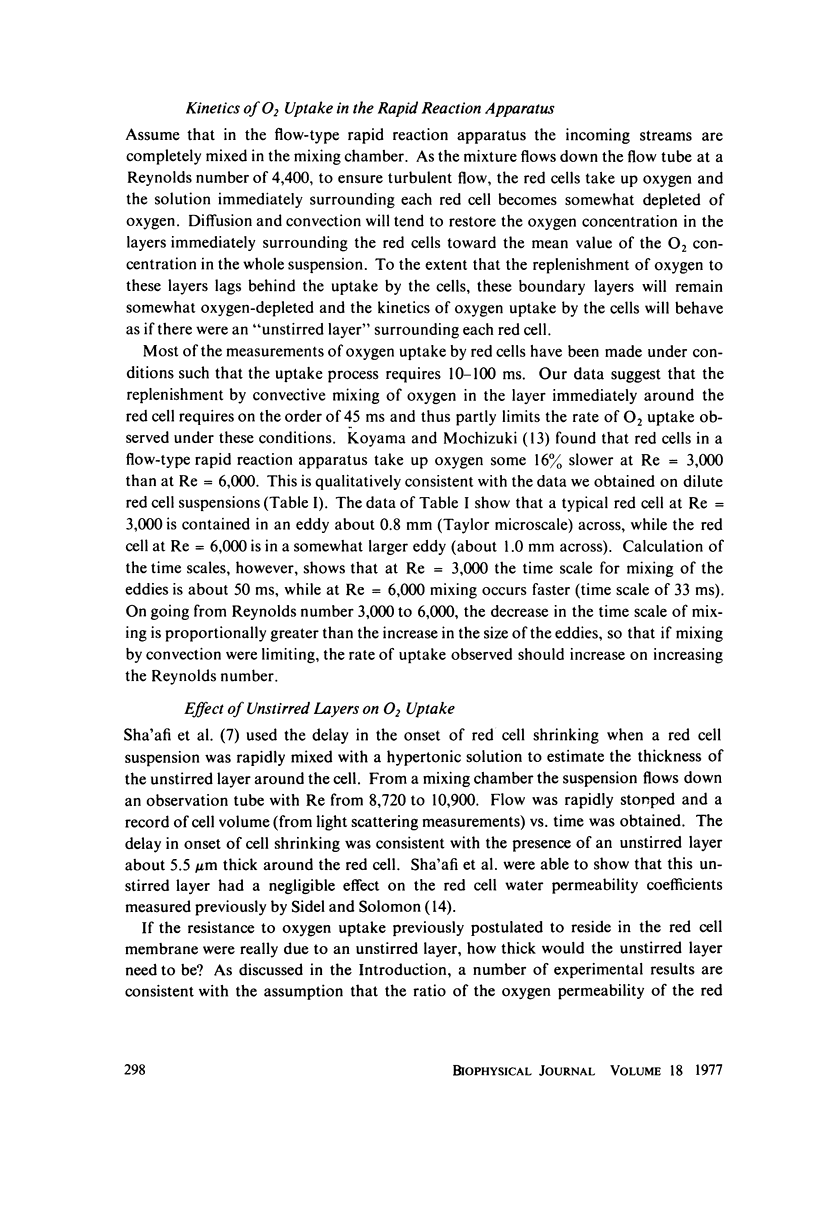
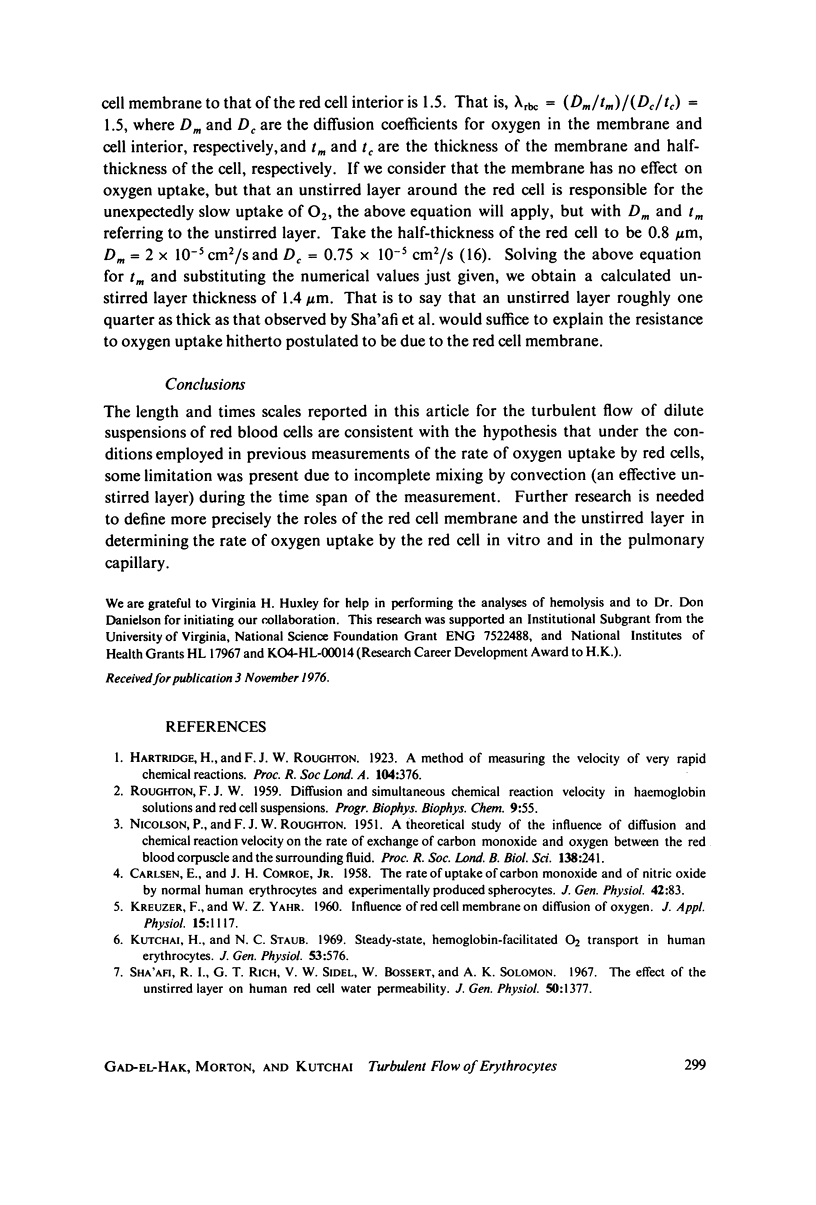
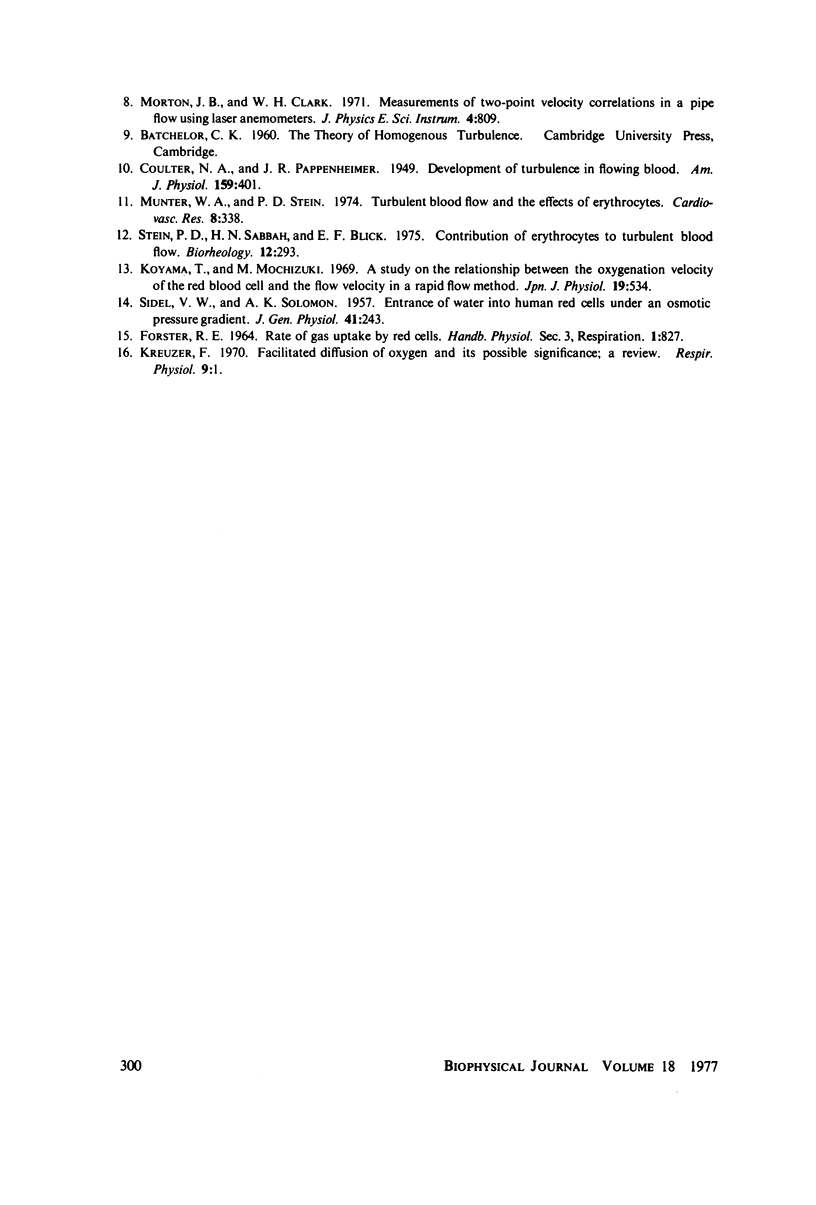
Selected References
These references are in PubMed. This may not be the complete list of references from this article.
- CARLSEN E., COMROE J. H., Jr The rate of uptake of carbon monoxide and of nitric oxide by normal human erythrocytes and experimentally produced spherocytes. J Gen Physiol. 1958 Sep 20;42(1):83–107. doi: 10.1085/jgp.42.1.83. [DOI] [PMC free article] [PubMed] [Google Scholar]
- COULTER N. A., Jr, PAPPENHEIMER J. R. Development of turbulence in flowing blood. Am J Physiol. 1949 Nov;159(2):401–408. doi: 10.1152/ajplegacy.1949.159.2.401. [DOI] [PubMed] [Google Scholar]
- KREUZER F., YAHR W. Z. Influence of red cell membrane on diffusion of oxygen. J Appl Physiol. 1960 Nov;15:1117–1122. doi: 10.1152/jappl.1960.15.6.1117. [DOI] [PubMed] [Google Scholar]
- Koyama T., Mochizuki M. A study on the relationship between the oxygenation velocity of the red blood cell and the flow velocity in a rapid flow method. Jpn J Physiol. 1969 Aug;19(4):534–546. doi: 10.2170/jjphysiol.19.534. [DOI] [PubMed] [Google Scholar]
- Kreuzer F. Facilitated diffusion of oxygen and its possible significance; a review. Respir Physiol. 1970 Apr;9(1):1–30. doi: 10.1016/0034-5687(70)90002-2. [DOI] [PubMed] [Google Scholar]
- Kutchai H., Staub N. C. Steady-state, hemoglobin-facilitated O2 transport in human erythrocytes. J Gen Physiol. 1969 May;53(5):576–589. doi: 10.1085/jgp.53.5.576. [DOI] [PMC free article] [PubMed] [Google Scholar]
- Munter W. A., Stein P. D. Turbulent blood flow and the effects of erythrocytes. Cardiovasc Res. 1974 May;8(3):338–346. doi: 10.1093/cvr/8.3.338. [DOI] [PubMed] [Google Scholar]
- NICOLSON P., ROUGHTON F. J. W. A theoretical study of the influence of diffusion and chemical reaction velocity on the rate of exchange of carbon monoxide and oxygen between the red blood corpuscle and the surrounding fluid. Proc R Soc Lond B Biol Sci. 1951 Jun;138(891):241–264. doi: 10.1098/rspb.1951.0020. [DOI] [PubMed] [Google Scholar]
- SIDEL V. W., SOLOMON A. K. Entrance of water into human red cells under an osmotic pressure gradient. J Gen Physiol. 1957 Nov 20;41(2):243–257. doi: 10.1085/jgp.41.2.243. [DOI] [PMC free article] [PubMed] [Google Scholar]
- Sha'afi R. I., Rich G. T., Sidel V. W., Bossert W., Solomon A. K. The effect of the unstirred layer on human red cell water permeability. J Gen Physiol. 1967 May;50(5):1377–1399. doi: 10.1085/jgp.50.5.1377. [DOI] [PMC free article] [PubMed] [Google Scholar]
- Stein P. D., Sabbah H. N., Blick E. F. Contribution of erythrocytes to turbulent blood flow. Biorheology. 1975 Aug;12(5):293–299. doi: 10.3233/bir-1975-12507. [DOI] [PubMed] [Google Scholar]


